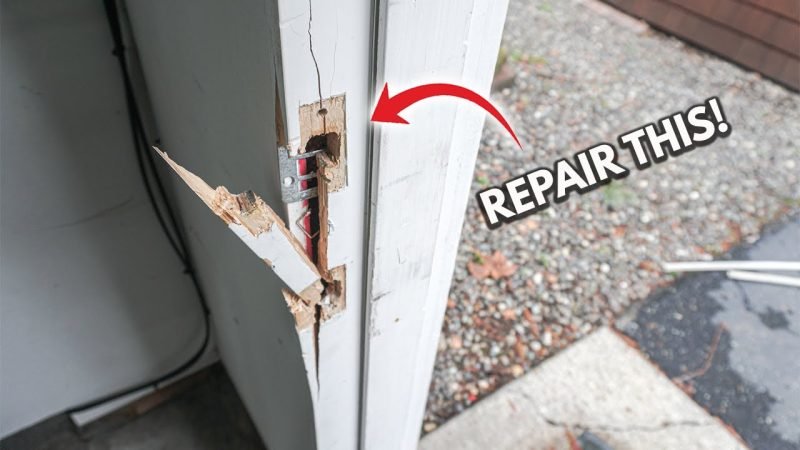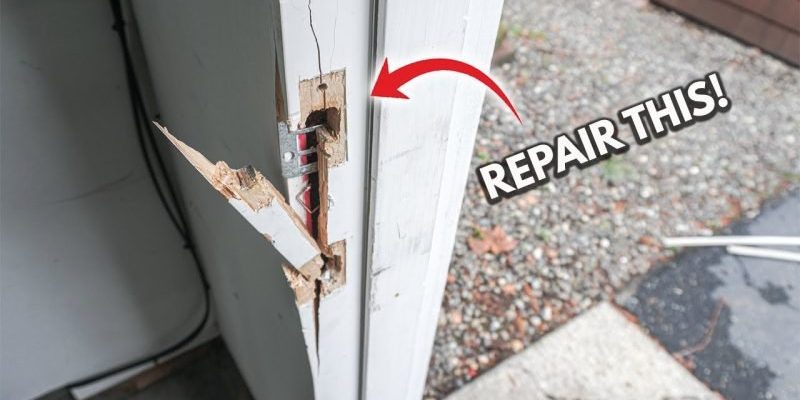
Here’s the thing: replacing a damaged kick plate isn’t nearly as intimidating as it sounds, even for someone who’s never held a power drill. Most textured fiberglass doors come from brands like Therma-Tru, Masonite, or JELD-WEN, and regardless of the logo on your door, the basic process is the same. With a few simple tools, a dose of patience, and a chunk of time on a lazy Saturday, you can swap out your old kick plate and have your door looking sharp again—without calling a pro.
What Is a Kick Plate, and Why Does It Matter?
A kick plate is that flat, often metallic strip fastened along the bottom section of a door. It serves a simple but important purpose: shielding the door’s surface from scuffs, scrapes, and other daily abuses. For fiberglass doors, especially the textured kind, a kick plate helps preserve the surface’s unique look. These plates come in materials like brass, aluminum, or stainless steel, and they’re usually chosen to match the door’s style or hardware.
Why bother replacing a damaged kick plate? For starters, a dented or rusted plate just looks bad, dragging down your home’s curb appeal. But it’s not just about looks. Let me explain: if a damaged kick plate starts to pull away or trap moisture, it can actually harm the bottom of your fiberglass door. Over time, trapped water could lead to discoloration, warping, or even mold creeping up from underneath. And trust me—fixing a whole door is way more expensive than swapping out one strip of metal.
So, whether your old kick plate is loose, bent, or just plain ugly, you’ll save yourself some headaches (and future repairs) by fixing it now. This little upgrade offers both cosmetic and practical benefits, and you don’t need to be a seasoned handyman to pull it off.
Choosing the Right New Kick Plate For Your Fiberglass Door
Before grabbing a screwdriver, it’s smart to pick the right replacement kick plate. Not all kick plates are created equal, and a textured fiberglass door has its quirks. First, you’ll want to measure the width and height of your existing kick plate. Most standard doors use a plate about 6–8 inches high, but the width should match your door’s exact measurement—usually 32, 34, or 36 inches.
Materials matter, too. You might be wondering: does it really make a difference? Absolutely. Aluminum is lightweight and resists rust, making it a top pick for exterior doors that see a lot of weather. Brass and stainless steel look sleek but cost more. Pick a finish that blends with your hinges or other hardware—polished, satin, or antique options all exist.
For textured fiberglass doors from brands like Therma-Tru and Masonite, be on the lookout for plates labeled as “flexible” or “contour-matching.” These plates can better conform to the subtle patterns and grooves of your door, giving you a cleaner fit. Some higher-end options even come with adhesive backing, but a traditional screw-on version is more secure, especially if you plan to do a lot of kicking.
Gathering Tools and Prepping for the Job
You don’t need a garage full of tools, but there are a few basics you’ll want on hand. Here’s a simple list:
- New kick plate: Sized and finished to fit your door.
- Measuring tape: For double-checking dimensions.
- Screwdriver (Phillips or flathead): Match the screws on your old plate.
- Drill (optional): For new screw holes, especially if installing on fresh fiberglass.
- Adhesive remover: If your old plate was glued on.
- Painter’s tape or masking tape: To mark positioning and protect the door’s finish.
- Cleaning supplies: Mild soap, rag, and a non-abrasive pad.
Set aside about an hour for the whole process, longer if glue is involved. Lay down a drop cloth or old towel under the door to catch dust or loose screws. If your door is extra grimy or you spot old caulk, it’s worth taking the time to clean the surface. A clean, dry surface is the secret to a tight, long-lasting seal—especially with textured fiberglass.
How To Remove the Damaged Kick Plate Safely
Let’s get down to business. Removing the old kick plate might take a little elbow grease if it’s been on there a while. If it’s held on with screws, use the correct screwdriver and turn slowly. Sometimes, screws can be painted over or slightly stripped—press down firmly and go slow to avoid damage.
- If you spot caulk or adhesive, use a plastic putty knife to gently pry the plate loose. Avoid anything metal that might gouge your textured fiberglass. Work from one edge to the other, wiggling as you go, and don’t try to rip the plate off in one big pull.
- For stubborn adhesive, a little adhesive remover (tested first in a hidden spot) helps break the bond. Be patient—rushing can chip that fiberglass pattern, and that’s a pain to fix.
- Once the old plate is off, give the area a once-over. Remove any leftover screws, glue residue, or bits of caulk. Clean the whole surface and let it dry for at least 10–15 minutes.
Pro tip: If you see any old holes or chips in the fiberglass, now’s the time to fill them with a fiberglass repair kit or a dab of weather-resistant caulk. This sets the stage for a smooth install.
Marking and Positioning the New Kick Plate
You might be tempted to eyeball the placement of your new kick plate, but here’s the thing—crooked install jobs stand out every time you walk up to your door. Let me walk you through a foolproof way.
First, align the new plate with the bottom edge of your door. It should be snug—no overhang. Use painter’s tape to temporarily tack it in place. Step back and make sure it’s perfectly level with the floor (not just the bottom of the door, which could be slightly off from settling). Once you’re happy, use a pencil to make small marks through the screw holes as a guide.
If your new kick plate doesn’t line up with the old screw holes, don’t panic. As long as the new holes won’t overlap or weaken the fiberglass, it’s safe to drill new ones. For textured fiberglass, drill slowly with a fine bit—pressing too hard can crack the surface.
Make sure each screw or fastener is set to go straight in, not at an angle. Even pressure means the plate won’t warp or leave gaps over time. If adhesive is involved, remove the backing or apply a bead of weatherproof caulk along the top edge. This helps keep water out and adds a little extra holding power.
Attaching the New Kick Plate (Step-by-Step)
Ready for the satisfying part? This is where your door starts looking fresh again.
- Hold the plate in place: Line it up using your pencil marks and painter’s tape as a guide.
- Install screws: Start with the outside corners, tightening just enough to hold the plate snug. Don’t overtighten or you might strip the hole or warp the metal.
- Fill in the rest: Work your way across, inserting and tightening each screw one at a time. Keep checking for level as you go. If using adhesive, hold pressure according to the instructions before removing your painter’s tape.
- Final touches: Wipe away any fingerprints, adhesive squeeze-out, or pencil marks. Step back and admire your handiwork.
Here’s my take: it’s easy to overthink this part, but a little patience goes a long way. If you’re working with a contoured or textured kick plate, gently press it into the door’s pattern so that it sits flush. Most hardware stores carry screw caps or decorative plugs—those are a nice touch if you want to hide the fasteners and give your door a polished look.
Troubleshooting and Tips For a Clean Installation
You might be wondering what could go wrong with such a simple project. Honestly, textured fiberglass doors are tougher than they look, but there are pitfalls if you rush or skip prep.
First, if screws start to spin without catching, the hole might be stripped. Try a slightly bigger screw, or fill the hole with a sliver of wooden toothpick dabbed in glue before reinserting the screw. If your new kick plate doesn’t sit flush—maybe because of a thick door texture or a slight warp—add a thin bead of adhesive behind the loose section and clamp in place with painter’s tape for a few hours.
Rusty screws are another common problem. Always use stainless steel or exterior-rated hardware to avoid stains and corrosion. And if you spot gaps along the top edge, seal them with a thin line of clear silicone caulk. This keeps out rain—and tiny critters.
Lastly, keep the plate clean. Wipe it down occasionally with a soft cloth and mild soap. For stainless steel, a squirt of window cleaner and a quick polish will keep smudges at bay.
Comparing Universal Kick Plates vs. Brand-Specific Options
When shopping for a new kick plate, you’ll see universal models and ones made for specific brands like Masonite or Therma-Tru. What’s the difference? Universal plates are designed to fit most standard door sizes and shapes. They’re often a tad more flexible and forgiving, which makes them easy for beginners. But the fit might not be quite as seamless—especially on highly textured or specialty fiberglass doors.
Brand-specific kick plates, on the other hand, are cut to match the unique contours and measurements of the manufacturer’s panels. For example, a JELD-WEN kick plate might have special notching to clear raised designs, while a Therma-Tru plate could mirror the exact finish or curve of your door. This means a cleaner look, fewer installation headaches, and sometimes better weatherproofing.
Still, if you’re working with a fairly standard flat-bottomed door, a universal kick plate can save you both time and money. Just be sure to check the measurements—and remember, you can always trim a universal plate with tin snips if needed. When in doubt, your local hardware store can help you match up the best option for your specific door.
Enjoying Your Fresh-Looking Door
Stepping back after replacing a damaged kick plate on a textured fiberglass door, you’ll probably notice how much cleaner and more inviting your entryway looks. It’s one of those little upgrades that quietly lifts your home’s whole vibe. Plus, you’ve given your door an extra layer of protection—no more fretting over scrapes, muddy shoes, or the neighbor’s wayward lawn tools.
Replacing a kick plate is all about attention to detail: choose the right plate, prep your tools, and take your time lining things up. Whether you’ve tackled the job on a Masonite, Therma-Tru, or another fiberglass brand, the process is beginner-friendly and leaves you with a professional finish. So next time your door takes a hit, you’ll know exactly how to bring it back—no sweat, just a few simple steps and a little patience.
